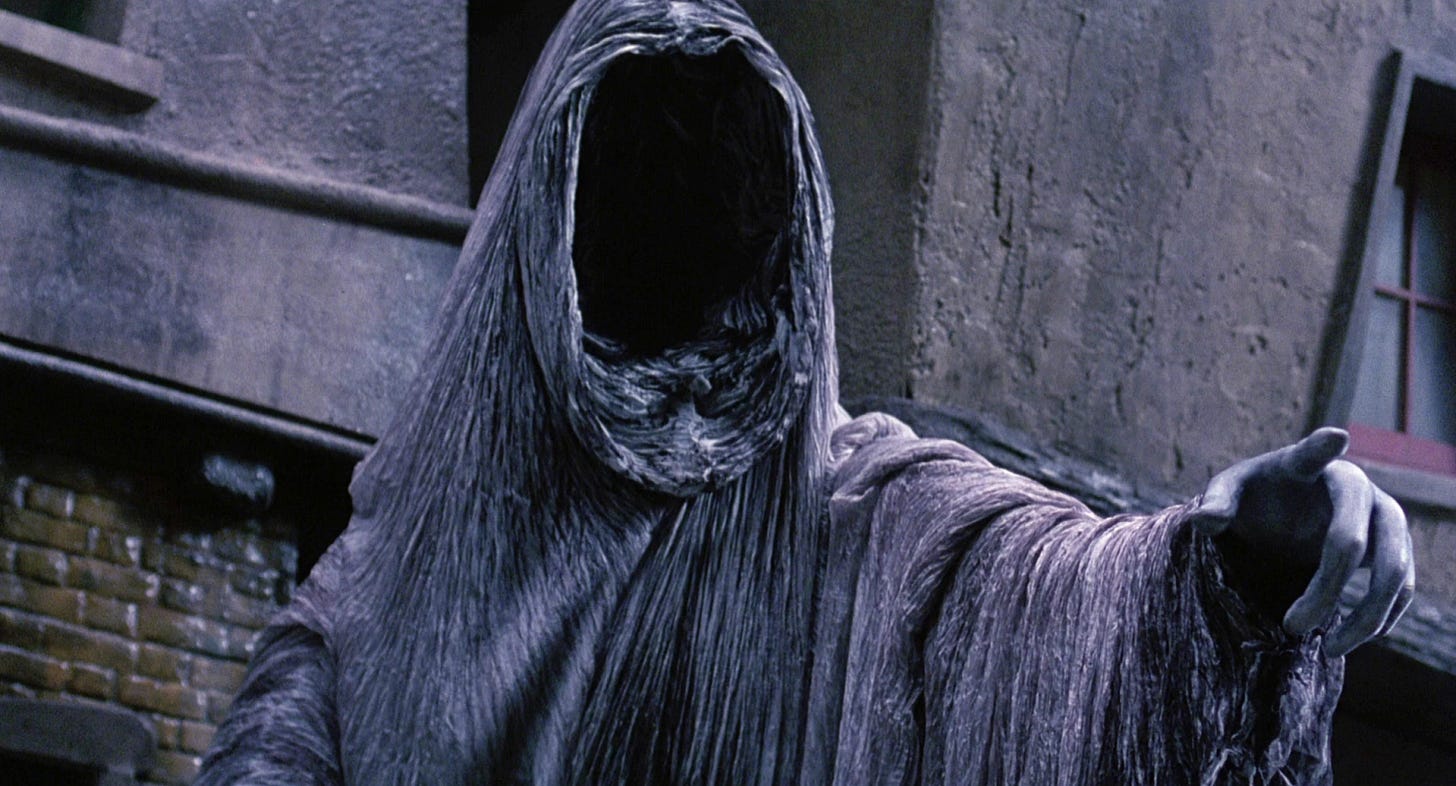🔍 Breaking the Failure Trap: Why We Choose 99% Failure Over 10% Success
The psychology behind our worst strategic decisions—and how to escape it
What do you all think about this new Retro series? As always, if something doesn’t work, I will try something new.
Choosing Success Over Failure: The Ghost of Christmas Future
The psychology behind our worst strategic decisions—and how to escape it
Would you rather have a 10% chance of success or a 99% chance of failure?
I've probably asked employees, cofounders, and investors this question at least 30 times in the past few years.
The answer seems obvious. But here's what's fascinating: when faced with this choice in real situations, almost everyone chooses the 99% path to failure.
Here's why: Most people focus on the immediate pain of change rather than the ultimate cost of not changing. They would rather accept a 99% chance of failure than face what it would take to pursue a 10% chance of success.
This is the failure trap, and it's everywhere.
Fear Locks Us Into Certain Failure
Almost everyone gets locked up by fear, held hostage by the terror of deviating from a path almost certainly headed toward failure.
The examples are everywhere: not giving direct feedback to an underperforming "key contributor," allowing toxic culture fits to poison the team, keeping friendly employees who try hard but can't deliver, delaying a difficult design or engineering decision, or continuing a project with no chance of success. There's agreement that a significant problem exists, but zero action because of fear of change.
"Let's cross our fingers and hope for the best" is not a strategy. It's surrender.
Many leaders apply stable company thinking to unstable business situations, which leads to catastrophically bad decision-making. When you're building something new, the rules are different. Safe choices become deadly choices.
The Ghost of Christmas Future
I broke free from this failure trap years ago when I learned to force myself to see the real consequences of staying on my current path.
Think about Scrooge in A Christmas Carol. The Ghost of Christmas Future shows him exactly where his current behavior leads—dying alone and unmourned. That glimpse of his actual future creates such emotional intensity that he immediately changes everything.
Most of us never look at our Ghost of Christmas Future. We focus on the immediate discomfort of change while ignoring the devastating long-term cost of not changing.
The exercise is simple but brutal: Where does your current path actually lead? What do you lose if you keep doing exactly what you're doing? What opportunities disappear forever?
When you force yourself to see the real endpoint of the 99% failure path, the 10% success path suddenly becomes less scary.
When Champions Play Not to Lose
This psychology isn't unique to business. You see it everywhere, including in professional football.
Take the prevent defense—used when teams are ahead late in games. The philosophy is "don't give up the big play" rather than "keep dominating." It often backfires.
Why? Because a prevent defense concedes easy yards to avoid low-probability explosive plays. But those easy yards add up. Teams pile up first downs, score methodically, and can flip momentum.
The data on fourth-down decisions tells the same story. UC Berkeley economist David Romer proved back in 2002 that teams should go for it on fourth down far more often than they do. The math is clear: going for it increases your chance of winning.
Yet most coaches still punt. They choose the "safe" option that actually makes them more likely to lose.
The rare coaches who embrace the data—like Kevin Kelley, who never punted in high school—dominate their competition. But most would rather lose conventionally than win unconventionally.
Sound familiar?
In business, we make the same trade-offs. We choose strategies that feel safe but mathematically decrease our odds of success. We punt when we should go for it. We play prevent defense when we should stay aggressive.
The Real Enemy: Comfortable Misery
The deepest truth about the failure trap is this: we often prefer comfortable misery to uncertain change.
A struggling startup founder knows their current strategy isn't working, but at least they know what to expect each day. A game studio keeps an underperforming team member because finding and training a replacement feels overwhelming. A company continues pouring money into a doomed project because the sunk cost feels too large to abandon.
We choose familiar problems over unfamiliar solutions.
This is why the 10% vs 99% question cuts so deep. It reveals that our brains are wired to avoid change and perceived risk, even when change dramatically improves our odds of success.
Breaking Free: Questions That Cut Through Fear
When you suspect you're on the 99% failure path, ask yourself:
What would I tell my best friend to do in this exact situation? (Removes your personal fear and status quo bias from the equation)
What would I do if this were a game and I was playing to win, not playing not to lose? (Connects to your competitive instincts rather than your protective ones)
What will I regret more in 5 years: trying this risky thing and failing or never trying at all? (Forces you to see your actual Ghost of Christmas Future)
The pattern I see in successful teams: they recognize the failure trap early and have systems to escape it. They build cultures where difficult truths can be spoken. They regularly audit their strategic assumptions. They're willing to course-correct before it becomes life-or-death.
The Bottom Line
Every day you stay on the path to 99% failure, that path becomes harder to leave. The sunk costs grow. The narrative solidifies. The fear compounds.
But here's what I've learned from getting punched in the face repeatedly: the regret of not trying is always worse than the regret of trying and failing.
The next time you face a choice between comfortable failure and uncomfortable possibility, remember your Ghost of Christmas Future. That's where your current path actually leads.
Choose the 10%.
Top 3 Gaming News
AA Games Lead GOTY Buzz with High Scores (Polygon)
Clair Obscur and Split Fiction, both AA games, are GOTY contenders with 90+ ratings—signaling a rise in quality mid-budget development.Elden Ring Film in Development with A24 (Game Developer)
A24 is producing an Elden Ring movie with director Alex Garland, aiming to adapt the game’s expansive lore and tone for film.Playtika’s Wooga Lays Off 50 Staff (Mobilegamer.biz)
Wooga, known for June’s Journey, cut 50 jobs amid restructuring—adding to broader mobile gaming layoffs this year.
Top 3 AI x Gaming News
Fortnite Introduces AI-Powered Darth Vader NPC (Polygon)
Epic Games launched an AI-driven Darth Vader character in Fortnite, capable of interacting with players using James Earl Jones's AI-recreated voice. Initial issues included inappropriate responses, but swift updates improved the AI's behavior, setting a precedent for AI integration in gaming.Google Launches AI Coding Assistant 'Jules' (Times of India)
At Google I/O 2025, Google introduced 'Jules,' an AI-powered coding assistant designed to help developers by processing coding tasks asynchronously, enhancing productivity in game development.Supercell's AI Ambitions Highlighted in Weekly Recap (PocketGamer.biz)
Supercell's growing focus on AI technologies aims to enhance game development processes and player experiences, as noted in a recent industry roundup.
Wool Sort just started the latest game trend based on a new formula: replacing screws with spools of thread that players sort and connect into a new image.
As you can see, over a dozen studios tried to copy Wool Sort after its launch.










